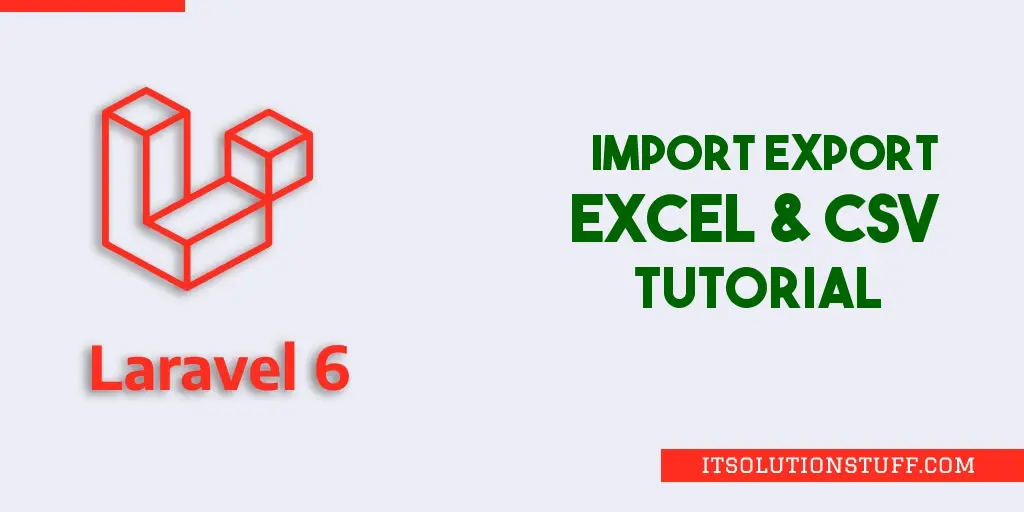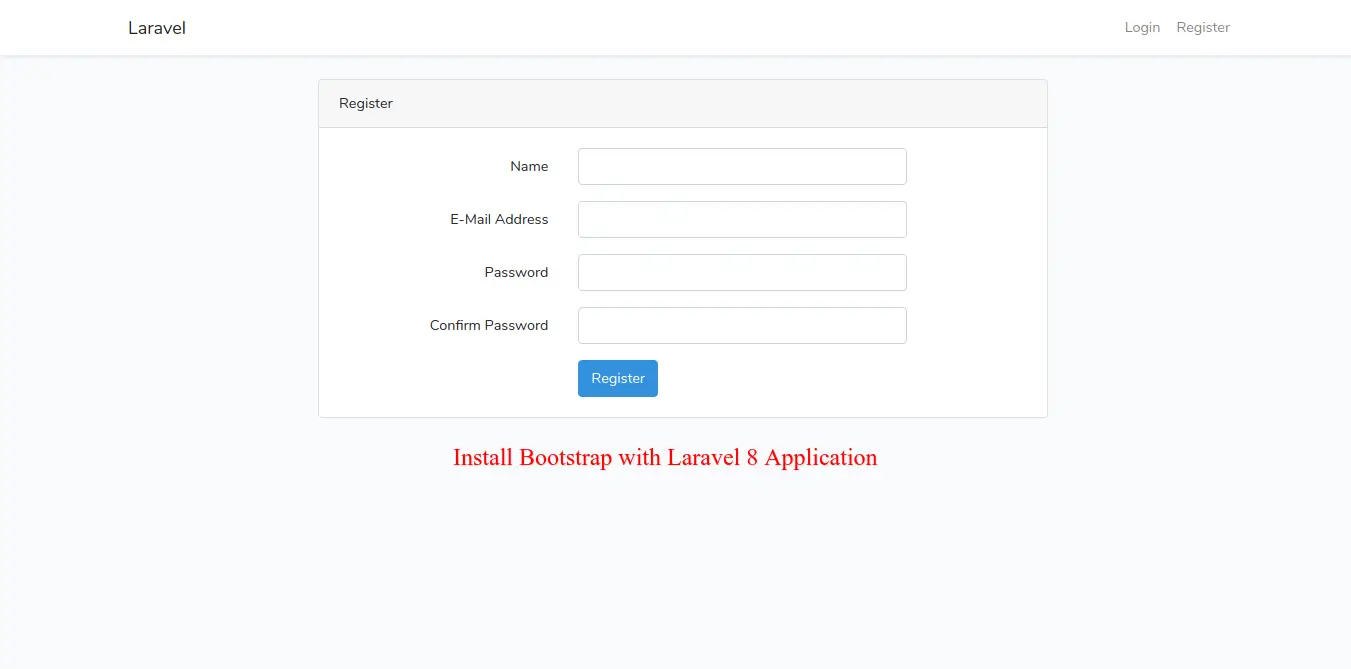This short tutorial demonstrates that in Skipper, import of an existing Laravel Eloquent project and the following model editing is simple and intuitive.
Pengertian dan Cara Install Laravel – Selamat datang di seri belajar tutorial laravel bahasa indonesia lengkap bagian pertama di www.malasngoding.com. Pada seri tutorial laravel ini kita akan belajar laravel dari yang paling dasar. Akan dijelaskan tutorial laravel mulai dari tahap pengenalan, pengertian dan cara instalasi laravel. Migration Laravel – Selamat datang kembali di tutorial belajar laravel lengkap di www.malasngoding.com. Sebelumnya kita sudah banyak sekali belajar tentang dasar-dasar dari laravel. Mulai dari yang paling awal adalah cara instalasi laravel, kemudian kita juga sudah belajar tentang controller, views, blade templating, dan lain-lain. Step 8 – Create Import Export Form; Step 9 – Run Development Server; Step 1 – Download Laravel 8 Application. First of all download or install laravel 8 new setup. So, open terminal and type the following command to install new laravel 8 app into your machine: composer create-project -prefer-dist laravel/laravel ExcelCSVImportExport.
Hint: See the ORM Model basics for a detailed description of ORM elements (e.g. bundle, entity).
Import project
At first, we will import demo project to Laravel Eloquent Skipper project (Skipper supports only database import for Eloquent projects). To do this, select Import External Model from File menu and follow the steps shown in the pictures below.
The last screen visually represents Demo project imported to Skipper and arranged automatically by import algorithm. It is a good starting point to work with your model.
Arrange visual model
Although the imported model is automatically arranged, it is a good idea to reposition entities inside the bundles to exactly fit the model logic. Also, you can change colors of bundles according to your preferences.
Extend project model
Now we have nice visual model. Let’s extend it to store categories for product entities. We add Category entity, configure new fields and create association between Category and Product entity.
Export model
When we finished the application model editing, the next step is to export it to Laravel Eloquent model migrations, model base classes and derived model classes. Model classes are exported in accordance with their namespaces to corresponding directories (based on PSR-4). Migrations are exported to databasemigrations directory which can be changed/configured for each module via ORM Properties.
Skipper exports base model object and derived model object for each Laravel Eloquent entity and one migration file for each defined migration in the application. Base model objects and migrations are updated during every export, but derived model objects are exported only once because they serves for defining user logic.
Before the first export we create our initial migration (revision), as shown in picture 2 below this section. After that, we export the whole project to a target directory. In our case, the project will export four schema model base classes, four derived classes and one migration file.
Tip: Each bundle might have its own export path which is relative to a project root directory.
And here is a full example of Customer entity. As you can see everything is well formatted and defined by Laravel Eloquent coding rules.
Base class:
Derived class:
Migrations file:

Next time you will need to make further changes or adjust the model, just open Skipper file and edit your project entities. Then again export the project to model classes and migrations.
Conclusion
As you can see above, import, editing and export to schema definition files is a five minute work with Skipper (ten if you are doing it for the first time). Now compare it with the effort of doing such task manually. As you have just discovered, Skipper dramatically saves your time and helps you work with schema definitions in much more enjoyable way.
Video tutorials
Export project
- Installation
- Web Server Configuration
Installation
{video} Laracasts provides a free, thorough introduction to Laravel for newcomers to the framework. It's a great place to start your journey.
Server Requirements
The Laravel framework has a few system requirements. All of these requirements are satisfied by the Laravel Homestead virtual machine, so it's highly recommended that you use Homestead as your local Laravel development environment.
However, if you are not using Homestead, you will need to make sure your server meets the following requirements:
- PHP >= 7.1.3
- BCMath PHP Extension
- Ctype PHP Extension
- JSON PHP Extension
- Mbstring PHP Extension
- OpenSSL PHP Extension
- PDO PHP Extension
- Tokenizer PHP Extension
- XML PHP Extension
Installing Laravel
Laravel utilizes Composer to manage its dependencies. So, before using Laravel, make sure you have Composer installed on your machine.
Via Laravel Installer
First, download the Laravel installer using Composer:
Make sure to place composer's system-wide vendor bin directory in your $PATH so the laravel executable can be located by your system. This directory exists in different locations based on your operating system; however, some common locations include:
- macOS and GNU / Linux Distributions:
$HOME/.composer/vendor/bin - Windows:
%USERPROFILE%AppDataRoamingComposervendorbin

Once installed, the laravel new command will create a fresh Laravel installation in the directory you specify. For instance, laravel new blog will create a directory named blog containing a fresh Laravel installation with all of Laravel's dependencies already installed:
Via Composer Create-Project
Alternatively, you may also install Laravel by issuing the Composer create-project command in your terminal:
Local Development Server
If you have PHP installed locally and you would like to use PHP's built-in development server to serve your application, you may use the serve Artisan command. This command will start a development server at http://localhost:8000:
Cara Import Project Laravel Di
More robust local development options are available via Homestead and Valet.
Configuration
Public Directory
After installing Laravel, you should configure your web server's document / web root to be the public directory. The index.php in this directory serves as the front controller for all HTTP requests entering your application.
Configuration Files
All of the configuration files for the Laravel framework are stored in the config directory. Each option is documented, so feel free to look through the files and get familiar with the options available to you.
Directory Permissions
After installing Laravel, you may need to configure some permissions. Directories within the storage and the bootstrap/cache directories should be writable by your web server or Laravel will not run. If you are using the Homestead virtual machine, these permissions should already be set.
Application Key
The next thing you should do after installing Laravel is set your application key to a random string. If you installed Laravel via Composer or the Laravel installer, this key has already been set for you by the php artisan key:generate command.
Typically, this string should be 32 characters long. The key can be set in the .env environment file. If you have not renamed the .env.example file to .env, you should do that now. If the application key is not set, your user sessions and other encrypted data will not be secure!
Additional Configuration
Laravel needs almost no other configuration out of the box. You are free to get started developing! However, you may wish to review the config/app.php file and its documentation. It contains several options such as timezone and locale that you may wish to change according to your application.
You may also want to configure a few additional components of Laravel, such as:
Web Server Configuration

Pretty URLs
Apache

Laravel includes a public/.htaccess file that is used to provide URLs without the index.php front controller in the path. Before serving Laravel with Apache, be sure to enable the mod_rewrite module so the .htaccess file will be honored by the server.
If the .htaccess file that ships with Laravel does not work with your Apache installation, try this alternative:
Cara Import Project Laravel Dari Github
Nginx
If you are using Nginx, the following directive in your site configuration will direct all requests to the index.php front controller:
Cara Import Project Laravel File
When using Homestead or Valet, pretty URLs will be automatically configured.
Comments are closed.